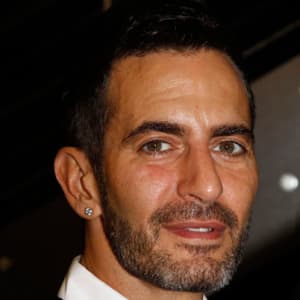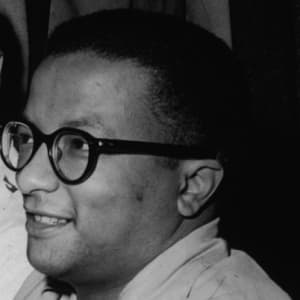
Aldous Huxley
Author and screenwriter Aldous Huxley is best known for his 1932 novel ‘Brave New World,’ a nightmarish vision of the future.
Synopsis
Aldous Huxley was born into a prominent intellectual family in Godalming, England, in 1894. After a serious illness left him partially blind as a youth, Huxley abandoned his dreams of becoming a scientist to pursue a literary career. In 1916 he graduated with honors from Balliol College at Oxford University and published a collection of poems. Five years later he published his debut novel Crome Yellow, which brought him his first taste of success. He followed with several more equally successful satirical novels before publishing the work for which he is best known, Brave New World. A dark vision of the future, it is widely regarded as one of the greatest novels of the 20th century. Huxley moved to the United States in 1937 and for the rest of his life maintained a prolific output of novels, nonfiction, screenplays and essays. He died of cancer in Los Angeles, California, in 1963.
Early Life
Aldous Huxley was born in Godalming, England, on July 26, 1894. The fourth child in a family with a deep intellectual history, his grandfather was the noted biologist and naturalist T. H. Huxley, an early proponent of Charles Darwin’s theory of evolution; his father, Leonard, was a teacher and writer; and his mother, Julia, was a descendant of the English poet Matthew Arnold. In adulthood, Huxley’s older brothers, Julian and Andrew, would both become accomplished biologists, and Huxley himself envisioned a future career in science from an early age.
But while he was still a boy, Huxley’s life would be upended by tragedy. In 1908 his mother died of cancer, and in 1911 he was struck blind by the disease keratitis punctata. Although Huxley did regain some of his sight, he would remain partially blind for the rest of his life and read with great difficulty. As a result, while attending the prestigious prep school Eton, Huxley abandoned his dreams of becoming a scientist and decided to focus on a literary career. Fate struck Huxley one more blow in 1914 when his brother Noel committed suicide after struggling with an extended period of depression.
Burgeoning Writer
A brilliant student despite the obstacles of his youth, Huxley earned a scholarship to Balliol College at Oxford University, where he studied English literature, reading with the aid of a magnifying glass and eye drops that dilated his pupils. He also began to write poetry, and in 1916 he published his first book, a collection of poems titled The Burning Wheel, the same year in which he graduated with honors.
Perhaps more important to his literary aspirations, however, was the time during this period that he spent at Garsington Manor, the home of socialite Lady Ottoline Morrell and a gathering place for intellectuals and writers such as Virginia Woolf, Bertrand Russell, T. S. Eliot and D. H. Lawrence, with whom Huxley would develop a lasting friendship. With his encyclopedic knowledge, matched only by his wit and skill as a conversationalist, it was at Garsington that Huxley first established his reputation as one of the most significant minds in England.
Leveraging this reputation, Huxley contributed articles to such periodicals as The Athenaeum, Vanity Fair and Vogue and published several more collections of poetry as well. In 1919 he also made advances in his personal life, marrying Maria Nys. She gave birth to their son, Matthew, the following year.
'Brave New World'
Amidst all of these professional and personal developments, Huxley began work on his novel Crome Yellow, a parody of the intelligentsia and his experiences at Garsington. Although the book's publication in 1921 angered many of his Garsington acquaintances, it also established Huxley as an important writer and sold well enough to allow him to pursue his literary destiny. While traveling about Europe with his family for the next several years, Huxley produced the commercially successful novels Antic Hay (1923), Those Barren Leaves (1925) and Point Counter Point (1928), which, like Crome, were satires of contemporary society and conventional morality. Huxley’s greatest work, however, was still to come.
Ensconced in his recently purchased villa in the South of France, in late 1931 Huxley began work on what is now widely considered to be one of the Western canon's most important novels. Published in 1932, Brave New World marks the apogee of Huxley’s abilities as a satirist. The world it presents, however, is viewed through a much darker lens, informed by the writer’s growing anxieties about the direction of political, social and scientific progress. Brave New World is also an astonishingly prescient novel, foretelling advances in each of these areas that were as much as a half-century away.
Set in London in 2540, the 7th century After Ford, Brave New World presents a future in which genetically engineered babies are produced on assembly lines, the social and economic divide between the haves and the have nots is legally enforced and discontent is quelled by advertising, medication, sex and entertainment. Now, nearly a century from the novel’s publication, among its prophecies that have come to pass are the rise of dictatorial governments, in vitro fertilization, genetic cloning, virtual reality, antidepressants and the invention of the helicopter.
The novel proved to be a massive critical and commercial success, cementing Huxley’s place as one of the most important writers of the era. In the decades that followed, that prestige would enable Huxley to not only indulge his love of travel but to also explore new ways of being.
Novels, Essays, Screenwriting and More
Huxley followed Brave New World with the 1936 novel Eyeless in Gaza, which showed his blossoming interest in Eastern philosophy and mysticism. The following year, he left Europe for North America, where he completed a work on pacifism titled Ends and Means, and in 1938 he settled in Los Angeles, California, where he would spend most of the rest of his life. During this time, Huxley added screenwriter to his long list of occupations and was paid handsomely by studios for his work. Among his more notable film credits are Pride and Prejudice (1940), Jane Eyre (1943) and Madame Curie (1943).
Settled comfortably in a Hollywood Hills home, in between screenplays Huxley continued his prolific literary output, completing the novels After Many a Summer Dies the Swan (1939), Time Must Have a Stop (1944) and Ape and Essence (1948) and the nonfiction works The Art of Seeing (1943, which chronicled a method used to improve his eyesight), The Perennial Philosophy (1946) and The Devils of Loudon (1952). He also worked on countless articles and editorials. Much of what time he had left he devoted to his interest in Eastern mysticism, beginning a decades-long association with the Vedanta Society, whose journal Huxley contributed numerous pieces to. This interest in mysticism also led Huxley to experiment with the hallucinogen mescaline, which he wrote about in his 1954 collection of essays The Doors of Perception. The title would later be appropriated by Jim Morrison as the name for his legendary rock group, the Doors.
A More Utopian Vision
In early 1955, Maria died of cancer, and later that year Huxley published his next novel, The Genius and the Goddess. In 1956, Huxley married his second wife, Laura, who would later write a biography of their life together titled This Timeless Moment (1968). In 1958, he published a collection of essays titled Brave New World Revisited, in which he took stock of the present day and argued that it alarmingly resembled the reality of his 1932 novel.
As Huxley tirelessly explored both the world around him and his inner self, sharing his findings through his work, in 1960 he was diagnosed with cancer. For the next two years he persevered, however, completing what would prove to be his last novel, The Island (1962), which placed a more positive spin on some of the themes Huxley addressed in Brave New World.
With Laura at his bedside, Aldous Huxley died on November 22, 1963, at the age of 69, having written more than 50 books, including one of the most significant of the 20th century, as well as innumerable works of criticism, poetry and drama. But despite his immense literary stature, his passing went largely unnoticed at the time, occurring as it did on the same day that President John F. Kennedy was assassinated.




